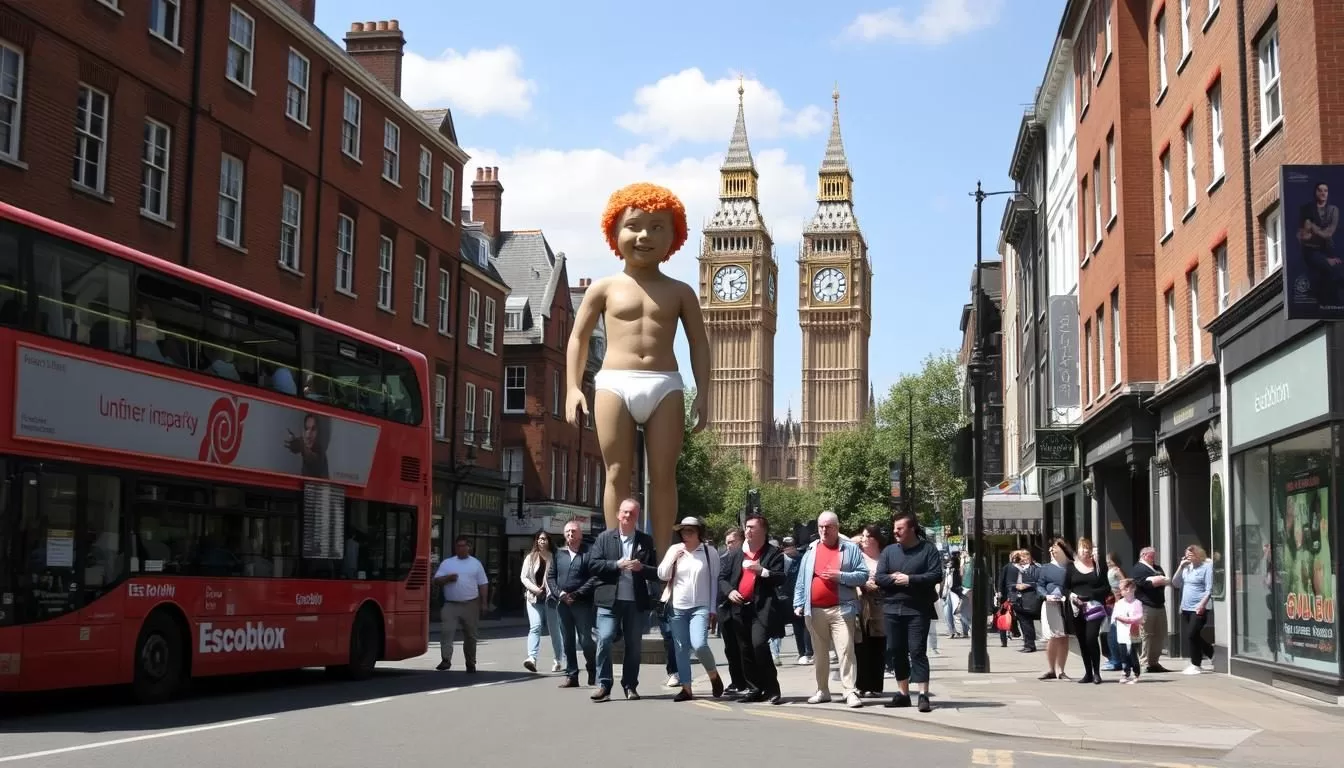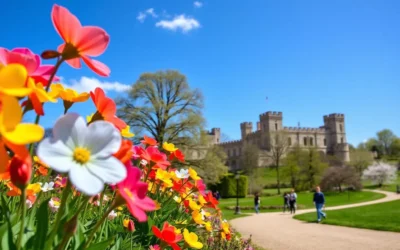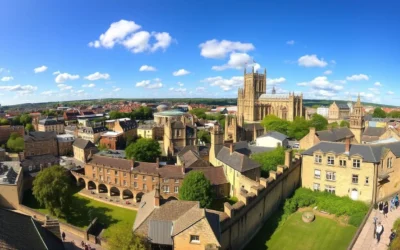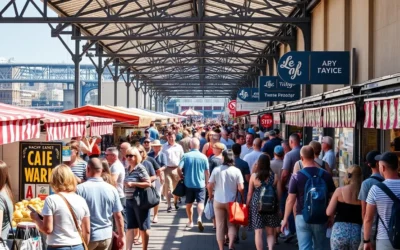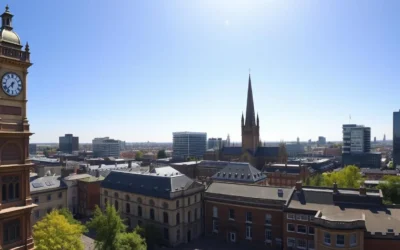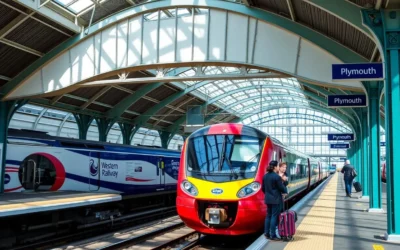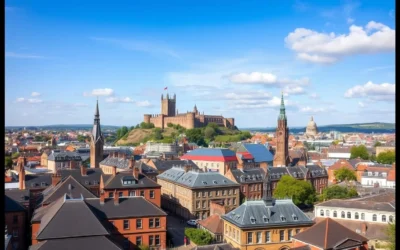✓ Accommodations✓ Flights✓ Rental Cars✓ Tours & Activities
Welcome to the ultimate guide on what might surprise you when visiting London, England’s vibrant capital city.
From unexpected expenses to cultural quirks, this city offers a unique experience that often catches first-time tourists off guard.
You’ll discover why London is considered one of the most visited cities in the world, yet still manages to shock tourists with its distinctive characteristics.
This comprehensive guide will prepare you for the surprising elements of London life that most travel guides don’t mention, helping you navigate like a local.
Prepare Your Wallet: London’s Eye-Watering Expenses
A trip to London can be a costly endeavor, but with some knowledge, you can navigate the expenses more effectively. London is known for its rich history, cultural landmarks, and vibrant atmosphere, attracting millions of travelers each year.
Accommodation and Dining Costs That Might Surprise You
When traveling to London, you might be taken aback by the high costs of accommodation and dining. Hotels in central locations can be particularly pricey. However, staying in a centrally located hotel can save you time and money on transportation costs over the course of your trip. Dining out can also be expensive, but there are ways to enjoy meals without breaking the bank.
For affordable lunches, consider looking for meal deals at supermarkets like Tesco, Sainsbury’s, and Marks & Spencer, rather than eating at restaurants for every meal.
Money-Saving Tips for Budget-Conscious Travelers
To make your travel to London more budget-friendly, take advantage of the city’s incredible free museums, such as the British Museum, Tate Modern, and National Gallery, which offer world-class exhibits without charging admission. For getting around, invest in an Oyster Card or contactless payment method for public transportation, which offers significant savings compared to purchasing individual tickets each time you ride the tube.
- Use public transportation efficiently by traveling during off-peak hours to benefit from reduced fares.
- Explore London’s beautiful parks and take advantage of free walking tours to enjoy the city without spending money on attractions.
- Plan your trip wisely to minimize unnecessary expenses.
Look Both Ways or Risk Your Life: Navigating London’s Left-Side Traffic
London’s left-side traffic rules can catch tourists off guard, making it crucial to be aware of your surroundings. As you walk around London, the traffic is not coming from the direction you may expect, especially if you’re from the U.S. or Europe. This can lead to many close calls every day.
![]()
The Dangers of Crossing Streets for First-Time Visitors
For many tourists, navigating London’s streets can be intimidating. The primary danger lies in crossing the street, as the traffic flows on the left side, contrary to what many visitors are used to. It’s not uncommon for people to look the wrong way and step into traffic.
This can be avoided by being extra cautious and taking a moment to adjust to the local traffic rules.
Tips for Safely Navigating London’s Roads and Crossings
To safely navigate London’s streets, always look both ways before crossing, even on one-way streets, as cyclists may come from either direction. You can use the helpful “Look Left” markings painted on the ground at many pedestrian crossings to remind yourself which way to check first.
- Take advantage of pedestrian crossings with traffic lights, known as “pelican crossings,” whenever possible.
- Remember that even if you feel like you’ve adjusted to the left-side traffic, stay vigilant throughout your visit.
- When in doubt, follow local pedestrians and cross when they do.
By being mindful of these tips, you can minimize your risk and enjoy your time exploring London.
A World Within a City: London’s Surprising International Character
As you step into London, you’re immediately immersed in a world of diverse cultures. This city is a melting pot where international communities have made their home, bringing with them their unique traditions, languages, and cuisines.
The Melting Pot of Cultures and Languages
London’s cultural diversity is reflected in its linguistic landscape. You’ll hear a multitude of languages being spoken on the streets, from the familiar European tongues to those from farther afield. This diversity is a result of historical immigration patterns, with communities from former British colonies settling in the city. The result is a cosmopolitan atmosphere that is both vibrant and welcoming.
Global Cuisine That Rivals Any International City
One of the most delightful aspects of London’s international character is its food scene. You’ll find more than 3,600 restaurants serving Indian cuisine alone, outnumbering those in Mumbai and Delhi combined. The city’s culinary offerings span the globe, with authentic dishes from virtually every corner of the world. From the spicy flavors of Bangladeshi cuisine on Brick Lane to the sophisticated eateries of Chinatown, London’s cities-within-a-city culinary districts offer a gastronomic journey around the globe.
| Cuisine | Notable Locations | Characteristics |
|---|---|---|
| Indian | Various neighborhoods | Rich, diverse flavors; wide range of dishes |
| Bangladeshi | Brick Lane | Spicy curries; traditional cooking methods |
| East Asian | Chinatown | Sophisticated dining; diverse noodle dishes |
London’s culinary landscape is a testament to its status as a global food capital, offering visitors a chance to explore international cuisines without leaving the city. Whether you’re in the mood for something familiar or adventurous, London’s diverse restaurants and eateries have something to satisfy every palate.
Free World-Class Museums in One of the Most Expensive Cities
London, a city often associated with high expenses, hides a treasure trove of free cultural gems. As you plan your visit, you’ll find that many of the city’s world-class museums offer free admission, making it possible to experience the rich cultural heritage without breaking the bank.
The British Museum, Tate Modern, and Other Free Cultural Gems
The British Museum is a must-visit, with its vast collection of artifacts from around the world, including the Rosetta Stone and the Elgin Marbles. The Tate Modern is another highlight, featuring an impressive collection of modern and contemporary art. These museums, along with several others, offer a glimpse into the city’s rich cultural landscape without charging tourists a single penny.
- The British Museum proudly holds the free attraction crown, welcoming a large number of visitors each year.
- The Tate Modern offers an extensive collection of modern and contemporary art, making it a cultural gem in the city.
- Other free museums and galleries are scattered throughout the city, providing a wealth of cultural experiences.
Paid Attractions Worth the Splurge
While London offers many free attractions, certain paid experiences provide unique value that justifies their admission fees. For instance, the Tower of London, with its 900-year history and the Crown Jewels, is an experience worth every penny. Similarly, Westminster Abbey, the coronation site for British monarchs since 1066, combines stunning architecture with historical significance.
- The London Eye, a prominent paid attraction, welcomes around 3.75 million paying visitors per year.
- The View from The Shard provides a breathtaking perspective from Western Europe’s tallest building.
- These premium attractions often justify their cost by offering unique experiences that can’t be replicated elsewhere in the city.
As you plan your trip to London, consider setting aside a bit of space in your budget for these paid attractions, which are sure to leave a lasting impression on your visit to this vibrant city.
London, England: What Visitors Find as Shocking! About the Weather
Visitors to London are often caught off guard by the city’s changeable climate. You might be surprised to learn that it doesn’t rain every day; in fact, sunny days are fairly common during the summer months. When the sun comes out, Londoners take to the streets, and the city comes alive.
The Unpredictable Climate That Confuses Tourists
London’s weather can be quite unpredictable, with conditions changing rapidly. It’s not uncommon for a sunny morning to turn into a rainy afternoon. This unpredictability can be confusing for tourists who aren’t prepared.
You should be aware that it does rain a lot in London, especially during the winter months. Being prepared with the right clothing and accessories can make a big difference in your travel experience.
How to Pack and Prepare for Any Weather Condition
To navigate London’s unpredictable weather, it’s essential to pack wisely. Here are some tips to help you prepare:
- Pack layers rather than bulky clothes, allowing you to adapt to temperature changes throughout the days.
- Always carry a compact umbrella or lightweight rain jacket, as London’s weather can change course without warning.
- Waterproof footwear is essential, especially if you plan to do a lot of walking.
By being prepared, you can enjoy your time in London without letting the weather dampen your spirits. It may work to check weather forecasts daily, but don’t rely too heavily on them, as predictions can be unreliable.
| Weather Condition | Recommended Preparation |
|---|---|
| Rain | Compact umbrella or lightweight rain jacket |
| Sunny | Light layers and sunscreen |
| Cold | Warm clothing and waterproof footwear |
Pub Culture: The Surprising Social Heart of London
You’ll be struck by how much people love going out for a drink in London, with numerous bars, restaurants, nightclubs, and pubs scattered throughout the city. London’s pub culture is a vibrant aspect of the city’s social scene, where locals and visitors gather to enjoy a pint or a Pimm’s Cup.
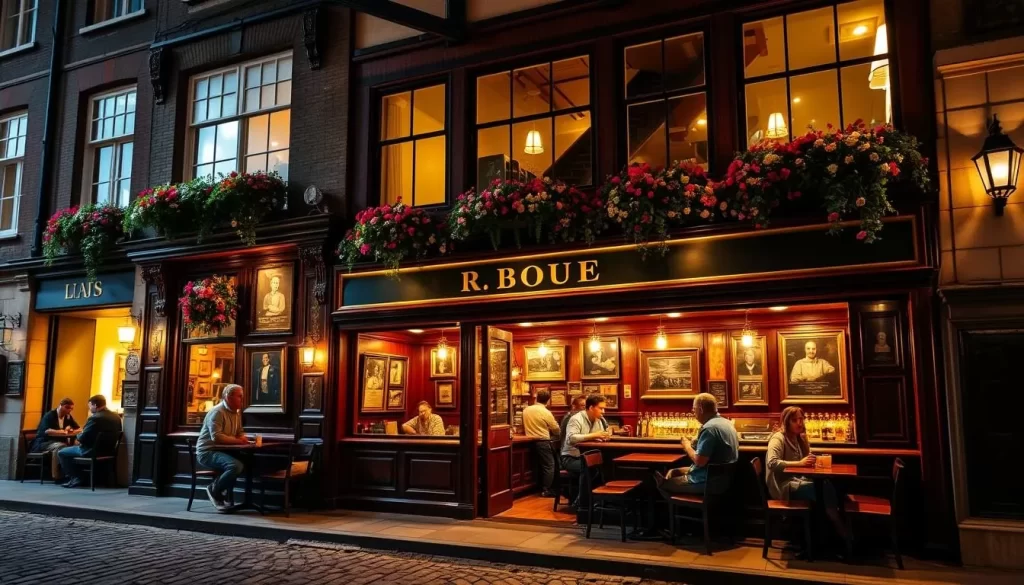
The British Love Affair With Their Local Pubs
The English have a deep affection for their local pubs, which serve as community hubs where people meet to socialize and relax. You’ll often see people having a pub crawl on a Thursday after work or with their friends after a football match on Saturday. This love for pubs is intriguing, given the traditional stereotype of the English as being reserved.
Pub Etiquette Every Visitor Should Know
To make the most of your pub experience, it’s essential to understand the local etiquette. When visiting a traditional British pub, you’ll need to approach the bar to order both drinks and food, as table service is rare. Here are some key tips to keep in mind:
- Form an orderly queue at the bar or position yourself visibly but patiently, as waving money or shouting to get attention is considered rude.
- Tipping isn’t expected for drinks at the bar, though leaving some change or rounding up for food service is appreciated.
- The “rounds” culture is important; when drinking with British friends, each person typically buys drinks for the entire group in rotation, and skipping your round is a serious social faux pas.
- Pub games like darts or quiz nights have their own etiquette, and locals will usually be happy to explain the rules if you show interest in participating.
- Respect the traditional closing call of “last orders” or “time, gentlemen, please,” which signals that the bar is about to stop serving.
| Pub Etiquette | Description |
|---|---|
| Ordering | Approach the bar to order drinks and food |
| Tipping | Not expected for drinks, but appreciated for food service |
| Rounds Culture | Each person buys drinks for the group in rotation |
By understanding and respecting these customs, you’ll be able to fully enjoy London’s pub culture and make the most of your social experience in this vibrant city.
Early Last Call: The Shocking Truth About London’s Nightlife Schedule
If you’re used to vibrant nightlife that goes on till the wee hours, London might surprise you with its early last call. While Londoners enjoy their drinks, the traditional pub culture is characterized by an early closing time, typically at 11:00 p.m.
This can be a shock for visitors from cities like Spain, Portugal, or New York, where 11:00 p.m. is just the beginning of a night out. In London, people tend to start their evening earlier, often right after work, to make the most of their time before the pubs close.
Why Pubs Close Earlier Than You Might Expect
London’s pubs have a long-standing tradition of closing relatively early. This is partly due to licensing laws and cultural preferences. As a result, many people head to pubs directly from work, enjoying a drink and some food before the evening winds down.
Some pubs may stay open later, but generally, you should plan your night accordingly. If you’re looking for a late night, you might need to look beyond the traditional pubs.
Where to Go for Late-Night Entertainment
While traditional pubs may close early, the city offers plenty of alternative venues that stay open later. Areas like Soho, Shoreditch, and Camden are known for their late-night bars and clubs. You can find nightclubs like Fabric in Farringdon and Ministry of Sound in Elephant & Castle, which keep the city’s nightlife alive until the early morning hours.
Additionally, many casinos operate 24 hours, offering bars and restaurants with late-night service. Look for bars that advertise themselves as “late-night” establishments, as they have special licenses to serve alcohol beyond the usual hours. London’s diverse population has also led to a variety of international nightlife options, including Spanish tapas bars and Middle Eastern lounges that stay open late.
| Area | Notable Venues | Typical Closing Time |
|---|---|---|
| Soho | Late-night bars and clubs | 2-3 a.m. |
| Shoreditch | Various nightclubs | 2-3 a.m. |
| Farringdon | Fabric nightclub | 6 a.m. |
The Vastness of London: Navigating a City Larger Than You Imagined
As you plan your trip to London, understanding the city’s vastness is crucial. London is not just a major metropolitan area; it’s a vast expanse of history, culture, and entertainment spread across a significant geographic area.
![]()
Diverse Neighborhoods
London is composed of numerous diverse neighborhoods, each with its unique character and charm. From the historic significance of Westminster to the cultural melting pot of areas like Brixton and Hackney, London’s neighborhoods offer a wealth of experiences. Understanding these neighborhoods can help you navigate the city more effectively, ensuring you visit the places that best suit your interests.
Transportation Tips
Navigating London’s extensive area requires a good understanding of its transportation system. The London Underground, affectionately known as the “Tube,” is the oldest train system in the world, dating back to 1863. Interestingly, more than 55% of it runs above ground. To efficiently cover long distances, using the Tube is essential, but you should also be aware that London’s public transportation is divided into fare zones (1-9), with prices increasing as you travel further from the center.
- Use an Oyster card or contactless payment for convenience and to save money.
- The iconic red double-decker buses offer a scenic way to navigate the streets and reach areas not served by the Tube.
- River services on the Thames provide both practical transportation and unique sightseeing opportunities.
For planning your journeys, utilize the Transport for London website or the Citymapper app, which provide information on service disruptions, closures, and the fastest routes combining different transportation modes. By understanding and utilizing London’s transportation network, you’ll be able to explore this vast city with ease.
Unarmed Police and Other Safety Surprises
One of the most surprising aspects of London for many visitors is the unarmed police force. As you walk through the city, you’ll notice that most police officers are not carrying firearms, which can be a stark contrast to what you’re used to in other countries.
Why Most London Police Don’t Carry Guns
The UK is known for having a relatively low rate of gun violence, and this is reflected in the way police are equipped. Most police officers in London do not carry guns as part of their standard equipment. This approach is rooted in the historical and cultural context of policing in the UK, where the emphasis is on community policing and de-escalation techniques.
You might see some police officers carrying firearms, especially at major transportation hubs or during specific events, but this is not the norm. The unarmed police presence contributes to a sense of safety and community, making it easier for people to approach them for help or directions.
Safety Tips and What to Do in Emergencies
While London is generally a safe city, it’s still important to be aware of your surroundings, especially in crowded areas and on public transportation. Pickpocketing is a common issue, so keep a close eye on your belongings. If you need assistance, don’t hesitate to ask a police officer; they’re approachable and happy to help.
- In emergencies, dial 999 for police, fire, or ambulance services.
- Be mindful of your surroundings, particularly when crossing the street, as looking the wrong way can lead to accidents.
- If you witness a crime or suspicious activity, report it to the nearest police officer or call 101 for non-emergency matters.
By being aware of your surroundings and knowing what to do in case of an emergency, you can have a safe and enjoyable trip to London.
Fascinating Facts That Will Change How You See London
London is full of surprises, and some of the most fascinating facts about the city will change your perspective forever. As you explore this vibrant city, you’ll uncover intriguing aspects that reveal its unique character.
The “Underground” That’s Mostly Above Ground
While London’s Underground is famously known as the Tube, a significant portion of it is actually above ground. This might surprise you, as the mental image of the Underground is often associated with being deep beneath the city streets. In reality, many of the lines are elevated, making it a fascinating aspect of London’s infrastructure.
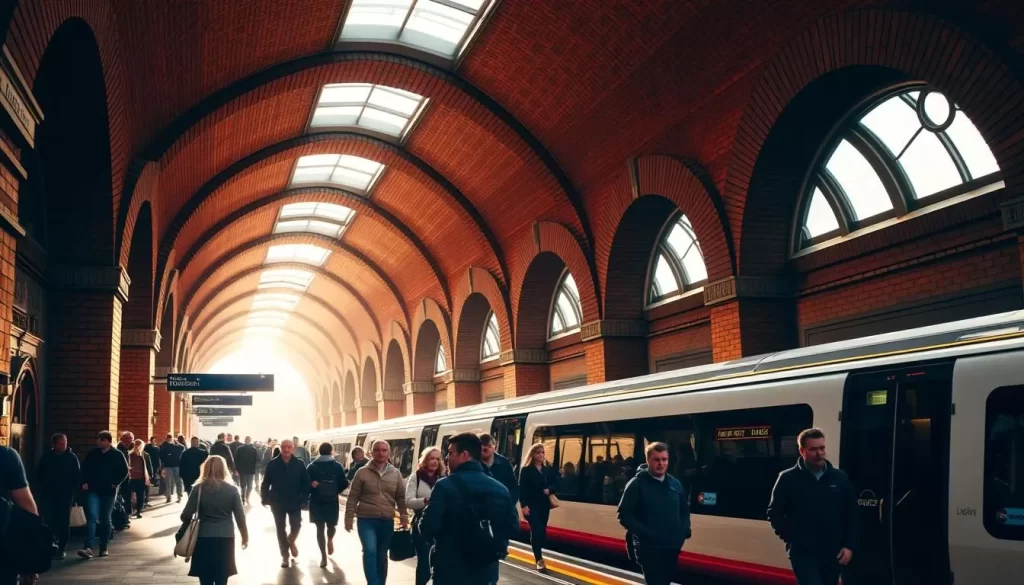
London Bridge vs. Tower Bridge: The Common Tourist Confusion
A common mistake tourists make is confusing London Bridge with Tower Bridge. While both are iconic landmarks, they are distinct and have different histories. Tower Bridge is the more elaborate and photographed bridge, with its stunning Victorian architecture, whereas London Bridge is more functional and often overlooked despite its historical significance.
London as the World’s Largest Urban Forest
London is considered the world’s largest urban forest, thanks to its vast green spaces and tree coverage. With over 21% of the city covered in trees, it meets the United Nations’ criteria for being classified as a forest. This surprising fact highlights London’s commitment to maintaining vast space for nature within the urban landscape, providing a habitat for countless species and enhancing the quality of life for its residents and visitors alike. You can enjoy a stroll through one of the many parks or green areas, feeling like you’re walking through a forest, surrounded by the sounds of birds and the rustling of leaves on the tree branches.
Some key points that illustrate London’s status as an urban forest include:
- London has over 3,000 parks and green spaces.
- The city is home to an estimated 8.4 million trees.
- London’s green infrastructure provides essential services like air purification and temperature regulation.
Conclusion: Embracing London’s Charming Quirks
Embracing the quirks of London is key to unlocking a more authentic and enjoyable trip. As you’ve discovered, London is full of surprises, from its status as the world’s largest urban forest to its early-closing pubs and unarmed police. The city’s contradictions, such as being one of the most expensive city in the world yet offering world-class museums for free, are part of its fascination.
By understanding these aspects before your visit, you’ll experience London like a knowledgeable traveler. You’ll navigate its streets with confidence, enjoy its diverse food scene, and appreciate its unique character. The things that initially shock you will become the memorable stories you share about your trip. Whether you’re planning your first visit or returning for another exploration, these insights will help you appreciate London’s charming quirks.
So, pack your clothes and prepare for a time that will be filled with memorable things to see and do. London awaits, ready to surprise and delight you in equal measure.
The above is subject to change.
Check back often to TRAVEL.COM for the latest travel tips and deals.
